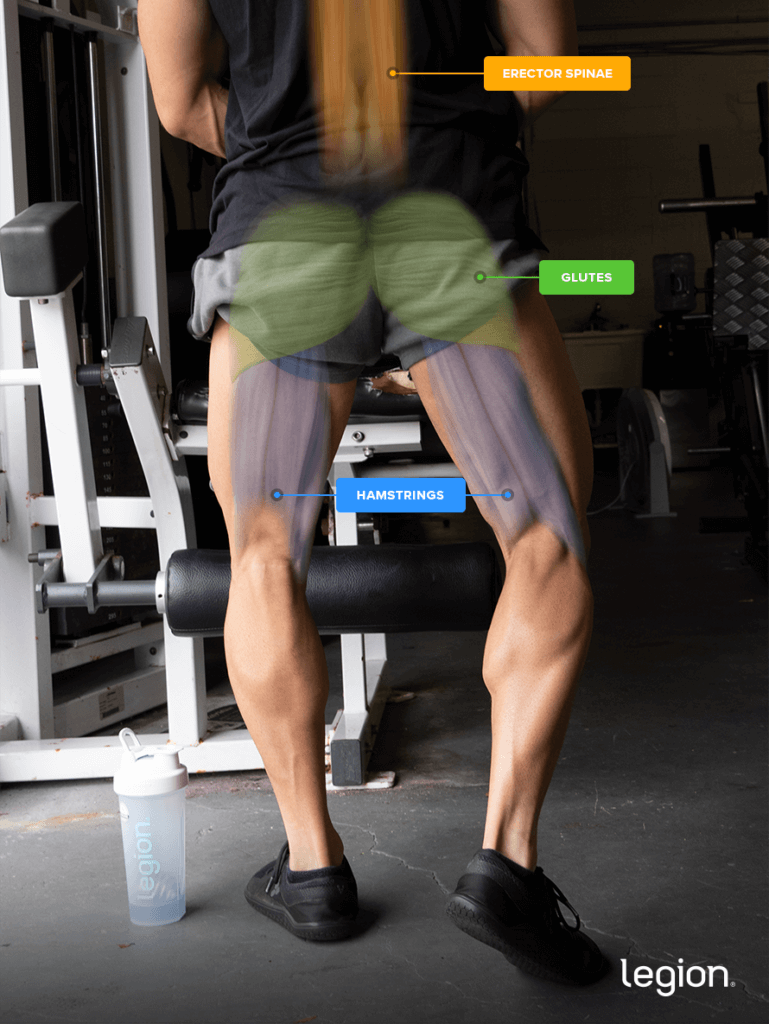What Is the Good Morning Exercise?
The good morning exercise—or “barbell good morning”—is a compound exercise that trains your entire posterior chain (the muscles on the back of your body), primarily the hamstrings, glutes, and lower back.It’s similar to the Romanian deadlift insofar as it involves “hinging” at the hips, then standing back upright. The difference is that you perform the barbell good morning with a barbell across your traps and rear delts, whereas in the Romanian deadlift, you hold the barbell in your hands.
Good Morning Exercise: Benefits
1. It trains your posterior chain (but is easier on your body than conventional deadlifting).
The main reason people do the barbell good morning is to train their hamstrings, glutes, and back without beating themselves up too much with the conventional deadlift.Research shows the conventional deadlift is still an outstanding exercise for developing and strengthening your posterior chain, though it’s taxing on the body and you can only do so much per week (once a week is generally plenty).
The barbell good morning is a good compromise that allows you to train many of the same muscles without risking injury or overreaching.
2. It trains your hamstrings eccentrically and in a stretched position.
There are two types of muscle action during most resistance exercises: concentric and eccentric.Concentric action involves shortening a muscle, like during the lifting portion of a biceps curl, and eccentric action involves lengthening a muscle, like in the lowering portion of a biceps curl.
Research shows that exercises that train your muscles in a stretched position and emphasize eccentric action, like the barbell good morning, are highly effective for building muscle.
While scientists aren’t exactly sure why this is, their current best guess is that emphasizing eccentric action and placing your muscles under load when stretched directly stimulates muscle protein synthesis and greatly increases anabolic (muscle-building) hormones.
3. It allows you to train your hamstring with heavy weights.
As a rule of thumb, the more weight you lift, the more strength and muscle you gain.Aside from the conventional deadlift, most hamstring exercises don’t allow you to handle heavy weights.
For example, exercises such as the hamstring curl, hyperextension, and kettlebell swing are great exercises for training your hamstrings but become awkward when you use heavy weights.
The barbell good morning, on the other hand, allows you to handle heavy weights safely and progress regularly, which is ideal for gaining muscle and strength.
Find the Best Diet for You in Just 60 Seconds
How many calories should you eat? What about "macros?" What foods should you eat? Take our 60-second quiz to get science-based answers to these questions and more.Take the Quiz
Good Morning Exercise: Muscles Worked
The main muscles worked by the barbell good morning are the . . .- Hamstrings
- Glutes
- Erector spinae

Good Morning Exercise: Form
The best way to learn how to do the barbell good morning is to split it into three parts: set up, hinge, and ascend.1. Set up
Adjust the hooks in a power rack or squat rack so the bar is at the height of your midchest.If your squat rack has safety arms or bars, set them to about the height of your midthigh. Load the bar with your desired amount of weight (or not, if the bar alone is enough).
Face the bar so you can walk it out backward. Don’t ever walk the bar out forward, as trying to rerack it by walking backward is dangerous. Get under the bar and position the bar across your mid-traps and rear delts, so it rests right above the little ridges on the back of your shoulder blades.
Grip the bar with either a thumbless (your thumbs resting on top of the bar next to your fingers) or a full grip (your thumbs wrapped around the bar), depending on which is most secure and comfortable for you.
Keeping your upper back tight, unrack the bar, step back from the squat rack, and position your feet about shoulder-width apart.
2. Hinge
Take a deep breath into your stomach, brace your abs, and with slightly bent knees, move your butt backward so your torso can “hinge” forward and lower the bar toward the ground in a straight line.A helpful cue is to imagine pulling the bar into the top of your feet as your hinge.
3. Ascend
Once you can’t lower the bar any further without bending your back (usually when your back is at about a 20-degree angle to the floor), push your butt forward and lift the bar with your back simultaneously. This is a mirror image of what you did during the hinge.A good cue for getting this right is to imagine throwing the bar off your back during the ascent.

